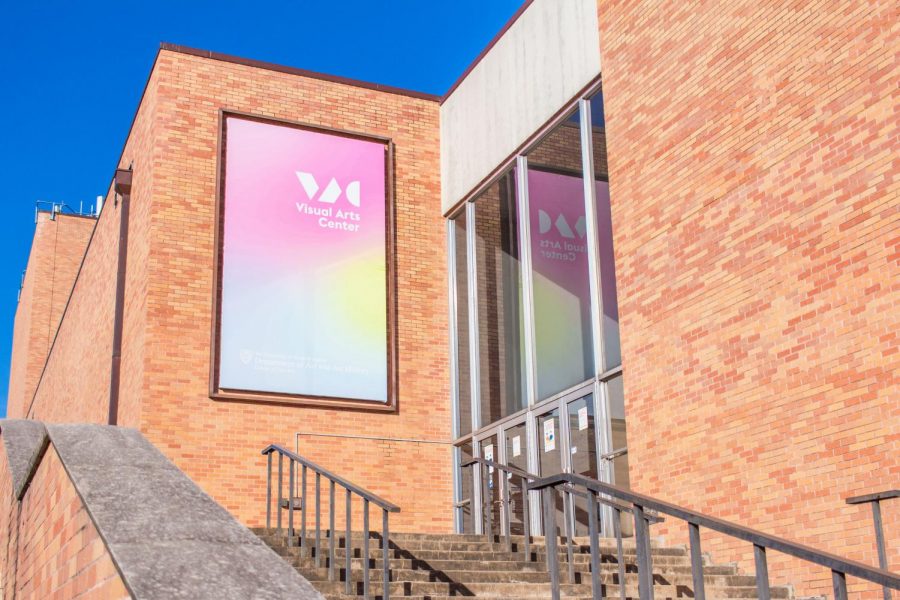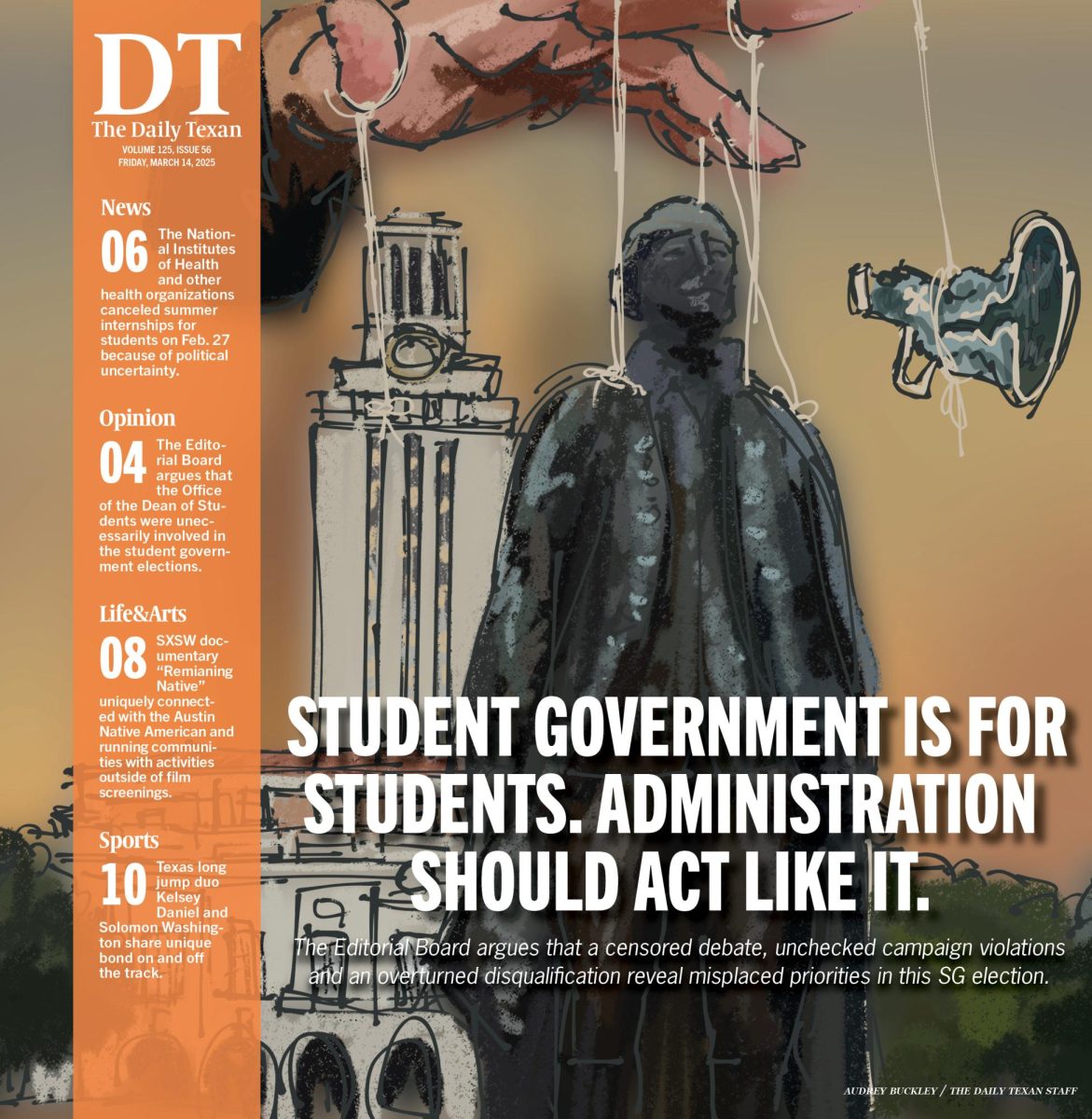UT students reinvent medieval art with augmented reality
November 17, 2021
Holding an iPad in front of her mural, Lusia Nnam watches her 2D artwork launch into motion.
Technology enables Nnam and her peers to translate their drawings into 3D animations enriched with sensory effects. With their artwork, they invite viewers to immerse themselves in the world of augmented reality.
“I was able to build up a whole new world of knowledge through this project,” the visual arts freshman said. “This software was something I’d never used before.”
Professor Katy McCarthy’s Time and Technology course offers an outlet for students like Nnam to combine physical and interactive art. This semester, students in the class reinterpreted a 14th-century medieval tapestry — made up of 90 panels and depicting the Book of Revelation — as a reflection of their own COVID-19 experience. Students chose one panel from the tapestry and combined vinyl cutouts with digital software to recreate the scenes.
“I was interested in finding ways to bridge gaps between archives and (students) contemporary experience,” McCarthy said. “We didn’t go through an apocalypse, but we went through a pandemic, a similar sort of thing.”
At the Visual Arts Center, students hung their artwork for UT community members to engage with from Oct. 22 to Nov. 6.
“We first sketched our designs for the project in Adobe Illustrator. Then we transferred our files into a digital fabrication lab where we printed out plastic rubber-like sheets containing our drawings,” Nnam said. “Using weeding, we cut out our stickers to get our original designs.”
Influenced by her sister’s pharmaceutical work, government senior Ally Raven said she emphasized the importance of essential workers during the pandemic in her vinyl.
“I saw the seven headed dragon and immediately thought of my sister and others like her,” Raven said. “They worked throughout the entire pandemic and many of them were underappreciated. The seven heads represent seven people like my sister.”
In order to bring depth and dimension into their art, the group members shifted their attention to Blender, an online 3D technology tool. Using the software, they revisited their Adobe Illustrator drawings and transferred them into the application. There, they morphed their designs into 3D animations and superimposed them with sensory stimuli.
The last step of the project involved connecting the Adobe Illustrator drawings to the Blender animations using the app UNITY. The vinyl cutouts acted as a simulated QR code, enabling the Blender animations to appear when the iPad was held near the art.
For Raven’s dragon piece, looking through the iPad showed the dragon’s mouth in motion with quotes spewing out.
“Each head said things like ‘I’m still here!’ and ‘appreciate me,” said Raven. “It really brought the entire message of my artwork together.”
Music elevated Nnam out of feelings of isolation and loneliness during the pandemic. When she saw a man playing a harp in one of the panels, she said she felt drawn to her own experience with jazz.
“During COVID I felt like I was required to create my own pockets of peace,” Nnam said. “That, for me, was music.”
While creating new opportunities for expression, the project also offered students a fresh perspective on pandemic perceptions.
“We were able to make something beautiful out of it,” Nnam said. “I learned how positive ideas could be drawn from an inherently negative situation.”












